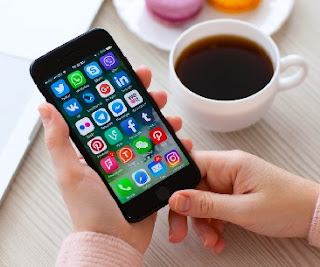There’s no question that an iPhone packs a ton of functionality into a small package. But even iOS users might not know all the hidden tricks that an iPhone is capable of.
Here’s a list of our favorite hidden and little-known iPhone features.
1. Change an eBook into an Audio Book
One neat — and often overlooked feature — is the iPhone’s ability to read any text on the screen out loud. While normally a feature to aid seeing impaired users, it can also turn any ordinary eBook into an audiobook.
To use it, go to:
Settings > General > Accessibility > Speech
From here, activate the Speak Screen function. Once you do, you can swipe down from the top of your screen with two fingers in any app — and it’ll read any text displayed on the screen to you. You can tweak certain functions, too — like voice gender and speaking speed.
2. Use Your iPhone as a Scanner
In our increasingly digital-driven world, it can be hard to find an analog scanner when you’re out and about. Luckily, the iPhone can easily mimic this function with the help of certain apps, like
Scanbot,
Dropbox and Microsoft’s proprietary
Office Lens.
Using these apps, you can simply take a picture of a document — or whiteboard, or business card — and turn it into a digital copy, which you can then export save or export. Some of these apps also offer an Optical Character Recognition feature, which lets you search the digital documents as if they were text files.
3. Use the iPhone’s Hidden Trackpad
While trackpads are normally the realm of laptops and desktops, any iPhone with 3D touch also has a trackpad hidden within its features — which can be extremely useful for editing text on your smartphone.
To use it, simply press and hold firmly on the keyboard within a text app. From here it’ll automatically switch to trackpad mode — you’ll know it’s working when you see the keyboard’s characters disappear. From here, you can move the cursor around more easily, and select, highlight or edit certain portions of text much quicker than you normally could.
4. View all the Photos a Contact has Texted You.
If you’ve been texting someone in iMessage for any period of time, you know how quickly a message thread can become huge. If you want to find a picture your friend sent you last month, for example, it can be cumbersome and time-consuming to try and scroll all the way up to find it.
Luckily, there’s an easier way to find photos. Simply open a thread in iMessage, and click the circular “I” icon in the upper right corner. From here, you can see a list of all the photos and attachments that you or your friend have sent each other.
5. Get Location-Based Reminders
By now, basically everyone knows that you can ask Siri to give you time-based reminders, but you can also ask Siri to give you location-based reminders too. For example, you can say, “Remind me to call my brother when I get home.” If you’re at work, you can ask Siri to remind you get to gas when you leave — and you’ll be sent a notification when you begin driving away.
For this to work properly, you’ll need to create updated cards in your Contacts with information like name, address and contact relationships. To do so, simply open Contacts and tap the contact you want to edit. Your personal Contact card can be seen at the top of your contacts list.
6. Control Your iPhone with Your Head
Sure, you can control your iPhone with your voice — but did you know that you can also control it with your head? Now, it’s not exactly mind-control, but it’s pretty cool to use head gestures to control certain system functions on your smart device.
To activate this little-known feature, open Settings, and go to General > Accessibility > Switch Control. Tap on the Switches option, and add a new switch using the Camera as a source. To activate Siri with a head gesture, for example, select Right Head Movement, and then Siri under System Setting. If Switch Control is on, you should see blue rectangles scanning objects on your iPhone’s screen. Tilt your head to the right, and Siri should be activated.
7. Apply a Color Filter to Your iPhone
One of the new and little-known features in iOS is the addition of what’s called “Color Filters.” This is a great way to make your iPhone easier on the eyes, or to tweak certain display colors to make the iPhone more accessible for color blind users.
To activate it, simply go to General > Accessibility > Accommodations > Color Filters. The grayscale mode introduced in iOS 8 has been moved here — if you feel the need to add a noir aesthetic to your phone. Otherwise, you can select from a range of color swap options, or simply apply a Color Tint to your iPhone. The latter feature is similar to Night Shift, but lets you tint the display basically in any hue or intensity you want.
8. Teach Siri Proper Pronunciation
Siri is a great tool for productivity and convenience on an iPhone, but there’s no getting around the fact that sometimes it can pronounce things a little off. Case in point: Siri’s infamous mispronunciation of
Barbra Streisand’s name.
To teach Siri to pronounce a name better, just activate Siri and say “That’s not how you pronounce (blank).” Siri will then ask you to pronounce the first and last name of a Contact, for example — and then ask you to select from a few different playbacks.



















